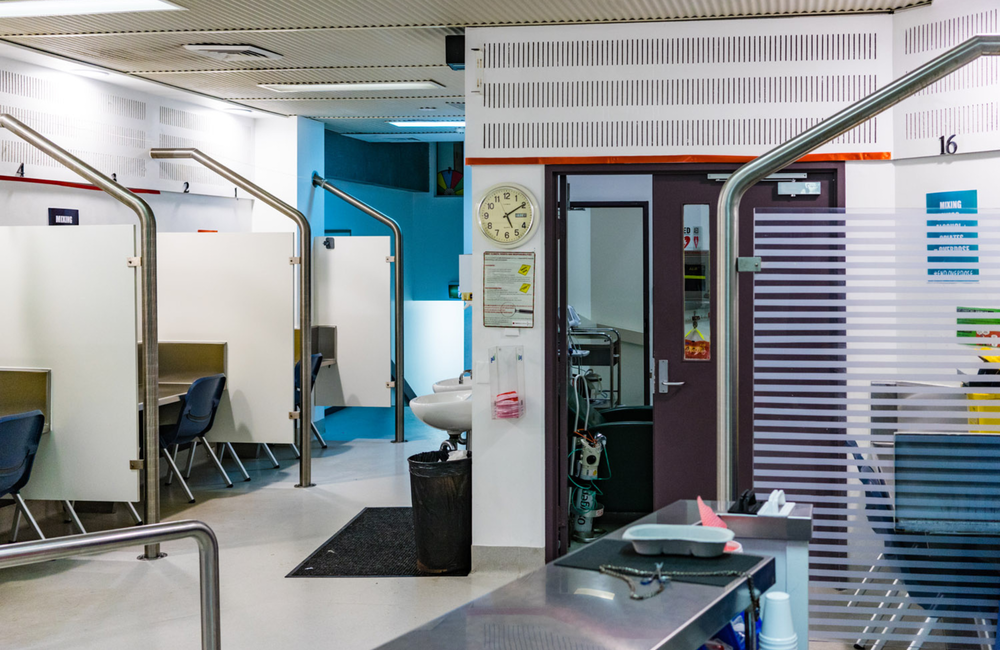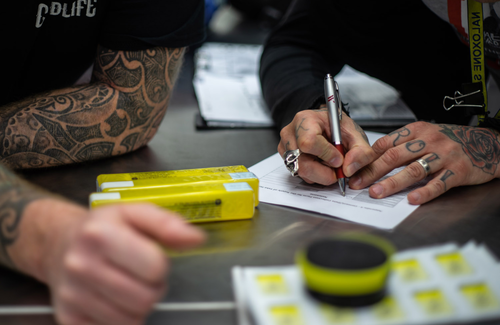
Australasia is the only global region with high coverage of needle and syringe exchange programmes and opioid agonist treatment, and globally only nine countries (Australia, Mexico, Canada, the USA, France, Germany, Portugal, Spain, and Switzerland) are implementing all five harm reduction services examined in a study recently published in the journal Lancet Global Health. In the systematic review, Dr Samantha Colledge-Frisby from Curtin University, Australia and her colleagues reviewed data from 177 studies and reports with relevant information on availability of needle and syringe exchange programmes (88 studies), opioid agonist treatment (72), take-home naloxone programmes (28), supervised consumption facilities (7), and drug checking services (15).
There are approximately 14.8 million people who inject drugs, with evidence of injecting drug use reported in 190 countries. Comprehensive coverage of harm reduction services is crucial to reducing drug-related harms and improving health outcomes for people who use drugs. The systematic review updates the global coverage estimates of needle and syringe exchange programmes and opioid agonist treatment programmes from the last review in 2017, and also reviews coverage of take-home naloxone programmes, supervised consumption facilities and drug-checking services.
Since 2017, there has been a slight increase in the global coverage of NSP and OAT programmes, in part due to increased investment by the Global Fund in some countries. At the national level, there have been significant changes in many countries. In some countries, harm reduction service coverage has increased as a result of the changes in service provision. For instance, in Romania the number of people accessing opioid agonist treatment has more than tripled to 1772 people in 2022. However, five Latin American countries closed services. In countries such as Belgium and India, the estimated proportion of drug users that accessed services (coverage) have decreased due to increases in the estimated number of people injecting drugs in the country.
Needle and syringe exchange programmes (NSP)
Between 2017 and 2022, the number of countries implementing NSP increased from 93 to 94. This means in 2022 88% of the global population of people who inject drugs lived in a country with some NSP coverage, while 12% lived in countries with none. In 2022, more data on coverage was available which showed that 73% of people who inject drugs lived in countries with low coverage (61% in 2017), 5% lived in countries with moderate coverage and only 2% lived in countries with high NSP coverage.
The number of countries with NSP implementation remained unchanged in most regions, but increased from 8 to 9 countries in the Middle East and North Africa and from 7 to 13 countries in sub-Saharan Africa. However, five countries in Latin America and one in western Europe stopped implementing NSP. In total NSP were unavailable in 95 countries.
Around 518 million needles and syringes were distributed annually, a 20 million increase compared to the 2017 review. Approximately 35 needles and syringes were distributed per person per year, which is classified as low coverage. Western Europe and Central Asia had moderate NSP coverage, with approximately 115 and 126 needles and syringes distributed per person, respectively. With five countries stopping NSP, the lowest NSP coverage was reported in Latin America. Among the ten countries with new data on needle and syringe distribution Cambodia had moderate coverage, while Malaysia, Bangladesh, Mozambique, Sierra Leone, Uganda, Albania, Denmark, Germany, and Serbia had low coverage.
Opioid agonist treatment (OAT)
OAT is a harm reduction approach that includes providing users of an illegal drug (such as heroin) with a less harmful replacement drug (such as methadone, buprenorphine or naltrexone) under medical supervision. This helps the person reduce the frequency of injections and their dependency on the more harmful drugs.
The number of countries with OAT programmes increased from 85 in 2017 to 90 countries in 2022. Globally 2.7 million people (with an increase of 250 000 people compared to 2017) were estimated to receive OAT, which is approximately 18 people per 100 people who inject drugs, indicating low global coverage. At the regional level, Western Europe, Australasia, and south Asia were reported to have high coverage. North America had moderate coverage and other regions had low OAT coverage. Among the 38 countries with low OAT coverage, in Afghanistan, Kazakhstan, and Azerbaijan, fewer than one person was receiving OAT per 100 people who inject drugs.
In 2022, a quarter of the global population of people who inject drugs lived in countries with no OAT programmes. As with NSP, the availability of more data has also changed the coverage estimates for OAT programmes. The proportion of people who inject drugs who lived in countries with low OAT coverage increased from 48% in 2017 to 59%, while 5% had moderate coverage, and 8% had high coverage. Since the last review, one country in the Caribbean, one in south-east Asia and four in sub-Saharan Africa launched OAT programmes. However, and one country in the Middle East and North Africa region stopped implementing OAT programmes.
Various OAT types are implemented across the globe. In 2022, methadone was available in 85 countries, buprenorphine in 57 countries, and 54 countries had both. Other OAT types (slow-release oral morphine, heroin-assisted treatment, or naltrexone) were available in 25 countries. OAT remains unavailable in 99 countries, including Russia, where half of the 1.3 million people injecting drugs are living with HIV and OAT is prohibited by law.
Take-home naloxone programmes
Naloxone is a medication that blocks the effects of opioids in order to prevent an overdose. Take-home naloxone programmes make the medication available for free and without a prescription to those who are at higher risk of opioid overdose.
In total, 43 countries distributed naloxone in 2022, with most services implemented in western Europe (15 countries) and eastern Europe (8 countries), followed by east and south-east Asia (4 countries). The global coverage of THN services was around 71%, and the Pacific Islands was the only region with no Naloxone distribution reported in 2022.
Supervised consumption facilities
Supervised consumption facilities are safe and clean spaces where people can bring their own drugs to use under the supervision of medically trained staff. They are proven to prevent accidental overdoses and reduce infections caused by needle and syringe sharing.
Only seventeen countries from five regions implemented supervised consumption facilities, with the majority in western Europe (12 Countries) followed by North America (2 countries), Latin America (1 country), eastern Europe (1 country) and Australasia (1 country).
Drug checking services
Drug checking services provide chemical analysis of substances to inform people who use drugs on the content and safety of substances bought in unregulated drug markets.
Twenty-six countries implemented drug-checking services, with the majority in western Europe (14 countries) followed by Latin America (5 countries), eastern Europe (3 countries), Australasia (2 countries) and North America (2 countries). Drug-checking facilities had the lowest global coverage, with 34% of people who inject drugs. Authors note that “most drug checking services were located at festivals or on short-term trials, so the number of [people] accessing these services would be limited.”
Conclusion
As the authors emphasise, “globally, most people who inject drugs do not have access to harm reduction services designed to reduce public health burden and improve quality of life”. Furthermore, supervised consumption facilities, take-home naloxone, and drug-checking services are not available in most countries. These services can play an essential role in reducing injecting drug use-related deaths and morbidity, even in countries with high NSP and OAT coverage.
Only five countries (2% of the global population of people who inject drugs) were reported to have high coverage of both NSP and OAT programmes. Despite the improvements in coverage and data availability, most countries are falling behind the global targets of high or moderate coverage. The authors conclude their findings “show global gaps in harm reduction service coverage to inform service planning and identify countries and regions where increased advocacy is required to improve the availability of services.”
Colledge-Frisby S et al. Global coverage of interventions to prevent and manage drug-related harms among people who inject drugs: a systematic review. The Lancet Global Health 11: e673-e683, 2023 (open access).

